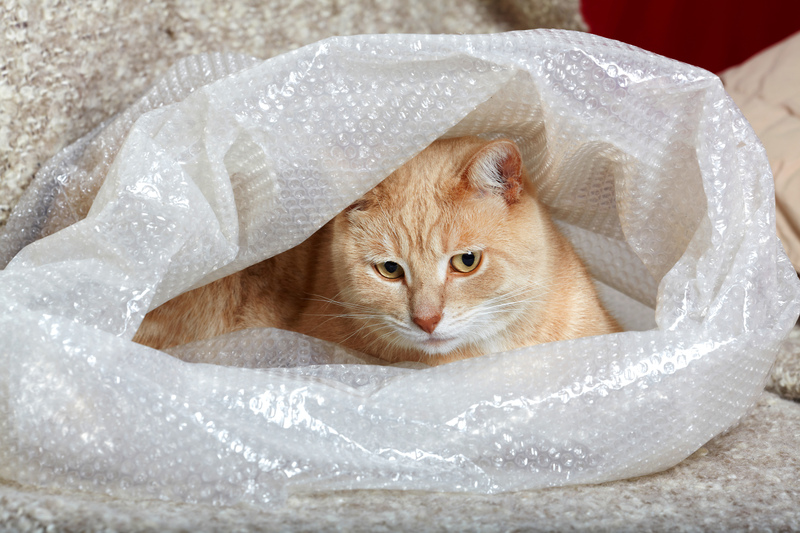Ultimate Sofa Preservation: Long-Term Storage Tips and Tricks
Posted on 17/05/2025
Ultimate Sofa Preservation: Long-Term Storage Tips and Tricks
Are you planning a move, renovating your home, or simply need to store your beloved couch for an extended period? The way you handle sofa storage can make a world of difference for its future comfort and appearance. Whether it's an antique settee, a contemporary sectional, or a family heirloom, proper long-term preservation ensures your furniture stays protected from dust, moisture, mold, and wear.
In this definitive guide, we offer expert tips and proven sofa preservation techniques for long-term storage. From preparing your couch before storage to choosing the ideal facility, you'll find easy steps and insider tricks that guarantee your furniture remains as stunning as the day you stored it.
Why Sofa Preservation Matters
Investing in furniture is no small decision. Sofas often serve as the centerpiece of our living rooms, offering a place to relax, entertain guests, and enjoy quality family time. With their daily use and significant price tag, preserving your sofa--especially during long-term storage--will:
- Prolong its lifespan
- Maintain comfort and aesthetics
- Save money by delaying the need for replacement or repairs
- Prevent health risks caused by mold, dust mites, or pests
Let's dive into the art of sofa preservation and the best long-term storage practices.

Preparing Your Sofa for Long-Term Storage
1. Thorough Cleaning: Start with a Fresh Slate
Before placing your couch in storage, it's crucial to remove all the dirt and debris that can attract pests or accelerate deterioration. Here's how to clean your sofa for storage:
- Vacuum every crevice--including beneath cushions and along seams, using an upholstery attachment
- Launder removable covers according to manufacturer recommendations
- Spot clean stains with mild soap and water or specialized upholstery cleaner
- Allow fabric to dry completely before proceeding to the next steps to prevent mildew
*Pro Tip: For leather sofas, use a pH-balanced leather conditioner after cleaning to keep the leather supple and prevent drying or cracking.*
2. Inspect and Repair
Preserving your sofa involves more than mere cleaning. Inspect it for loose legs, tears, sagging springs, or other signs of wear. Address these issues in advance to avoid bigger problems after storage. Simple repairs, like tightening bolts or sewing up small rips, can go a long way in long-term sofa storage.
3. Disassemble If Possible
Large sofas can be disassembled for easier transport and optimized storage space. Detach legs, remove cushions, and check if the back or arms come off. Make sure to store all screws, bolts, and hardware in a labeled bag and tape it to the base of the sofa or place in an easily accessible location.
Choosing the Right Storage Location
Climate-Controlled Storage: The Gold Standard
Humidity, temperature fluctuations, and pests are the biggest threats to long-term sofa preservation. For optimal results, rent a climate-controlled storage unit. This prevents:
- Mold and mildew growth in humid conditions
- Cracking or drying of wood and leather from extreme temperature swings
- Infestation by rodents and insects
While it might cost a bit more upfront, it will save money in the long run by preventing costly damage.
Home Storage: Is It Right For You?
If renting a facility isn't feasible, consider whether your home offers a suitable environment. Avoid storing sofas in garages, basements, attics, or sheds--these places are often susceptible to moisture, pests, and poor ventilation. Instead, choose a well-ventilated, dry indoor area with stable conditions.
Packing and Protecting Your Sofa for Storage
1. Invest in Quality Covers
Plastic wrap might seem like a good choice, but it traps moisture and can encourage mold. Instead:
- Use breathable furniture covers or old cotton sheets to shield your sofa from dust while allowing airflow
- Consider custom-fit covers for a snug, protective embrace
You can supplement fabric covers with light plastic sheeting on top for extra dust protection, but never wrap the whole couch in plastic.
2. Elevate Off the Ground
Direct contact with the floor exposes sofas to moisture and pests. Use wooden pallets, blocks, or foam panels to lift the sofa at least a few inches above the ground. This improves circulation and guards against accidental water leaks or flooding.
3. Mind the Placement and Position
- Never stack heavy items on top of your couch, which can deform cushions and frames
- Store the sofa in its normal, upright position to prevent distortion
- Leave space around the furniture to allow for airflow
- Stand cushions and pillows upright to help maintain their shape
4. Pest-Proof Your Storage Area
Pests can wreak havoc on stored sofas. Combat them by:
- Placing cedar blocks or lavender sachets near the furniture to repel insects
- Using non-toxic rodent traps around the perimeter
- Ensuring there are no food crumbs or organic debris left on or near the sofa
Material-Specific Storage Tricks
Fabric Sofas
- Deep clean and dry thoroughly to avoid odors or mildew.
- Sprinkle baking soda on cushions before covering for odor absorption (remove before use).
- Use a vacuum-sealed bag for cushions, but avoid sealing the frame tightly to allow air circulation.
Leather Sofas
- Condition the leather with a specialized product.
- Wrap in soft cotton sheets instead of plastic to prevent condensation under the cover.
- Keep away from heat sources or direct sunlight that may cause fading or cracking.
Wooden or Antique Sofas
- Apply wood polish or wax to nourish and protect wood.
- Bubble wrap ornate wooden accents for added protection.
- Ensure stable humidity in the storage area to prevent warping or splitting.
Inspection and Maintenance During Storage
Even the best-stored sofa benefits from periodic checks.
- Visit the storage unit every few months to inspect for signs of mold, pests, or damage
- Gently fluff cushions and rotate them if possible to help maintain their shape
- Reapply leather conditioner or wood polish every 6-12 months
- Refresh odor absorbers or pest deterrents as needed
Bringing Your Sofa Out of Storage
1. Carefully Remove Covers and Inspect
Unwrap and check for any damage, stains, or musty odors. Early intervention can prevent small problems from becoming major issues.
2. Clean and Freshen Up
- Vacuum the entire sofa and launder covers or steam clean as needed
- If the stored sofa smells stale, air it outdoors on a dry, sunny day
- Allow cushions and pillows to retake their shape before use

Frequently Asked Questions about Long-Term Sofa Preservation
How long can I store a sofa before it suffers damage?
With proper prep and a climate-controlled environment, a well-stored sofa can stay in good condition for years--sometimes even decades. The key is regular inspection and using sofa preservation best practices.
Can I use plastic wrap on my sofa?
Direct contact with plastic is not recommended for long-term sofa storage, especially for leather or upholstered pieces. Plastic can trap moisture, leading to mildew and mold. Instead, opt for breathable covers and only use plastic as an external dust shield if needed.
What's the best way to protect sofa cushions in storage?
- Clean and thoroughly dry each cushion before storage
- Use vacuum-sealed bags for temporary compression, but store them uncompressed for long-term periods
- Rotate and fluff cushions whenever you inspect your storage unit
Summary: Mastering the Art of Sofa Storage
Ultimate sofa preservation requires a blend of careful preparation, strategic packing, and ongoing vigilance. By following these long-term storage tips and tricks, you'll shield your cherished couch from common threats and extend the life, value, and comfort of your furniture. Remember, a little work upfront pays off years down the line when your sofa emerges from storage as gorgeous as ever!
- Clean deeply before storage
- Disassemble if possible for safer handling
- Choose a climate-controlled or well-ventilated location
- Protect with breathable covers, off the floor, and safely away from moisture and pests
- Inspect periodically for peace of mind
For more sofa preservation ideas, expert furniture care strategies, and long-term storage solutions, follow our blog or contact our team for personalized advice.






